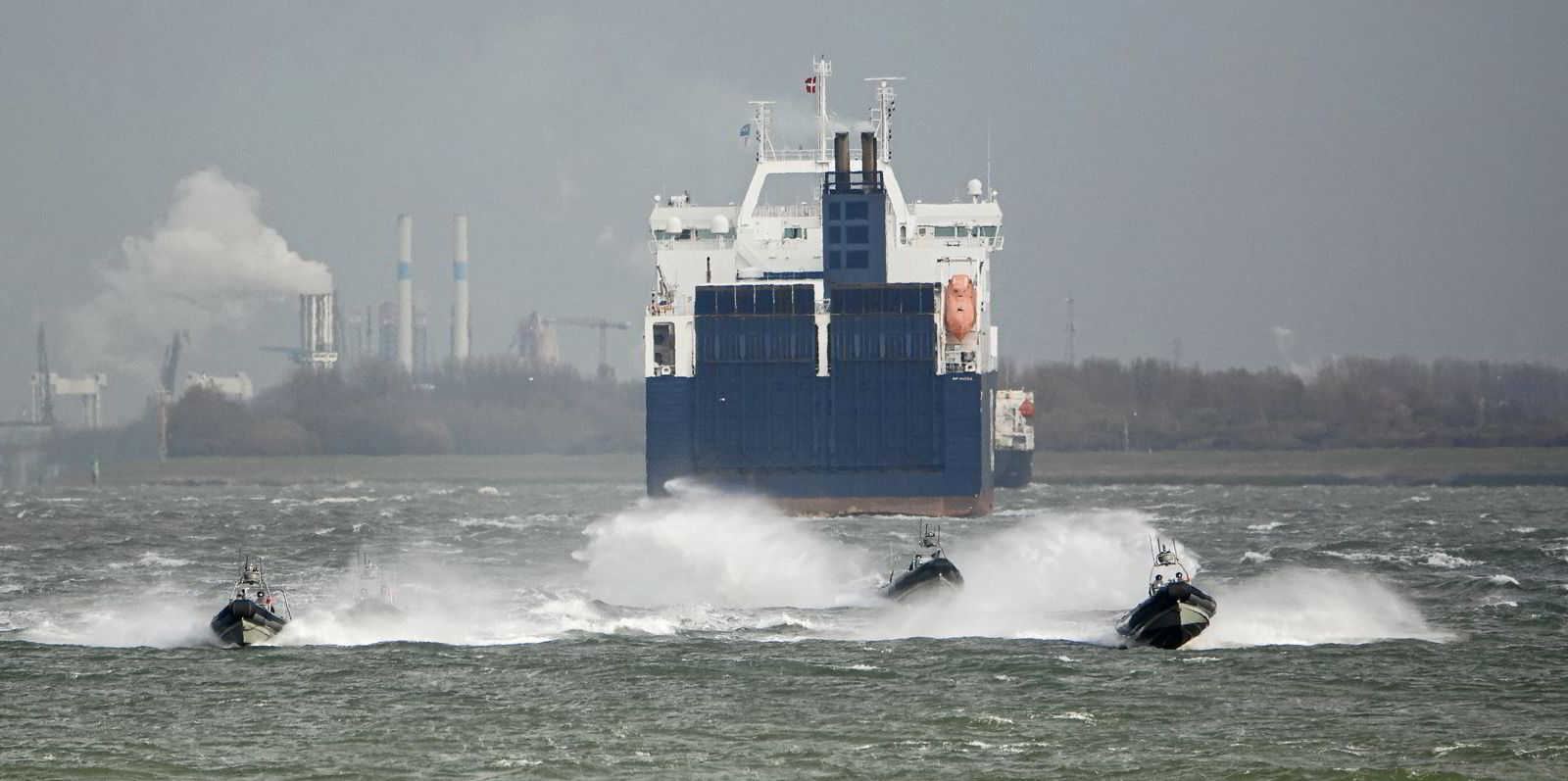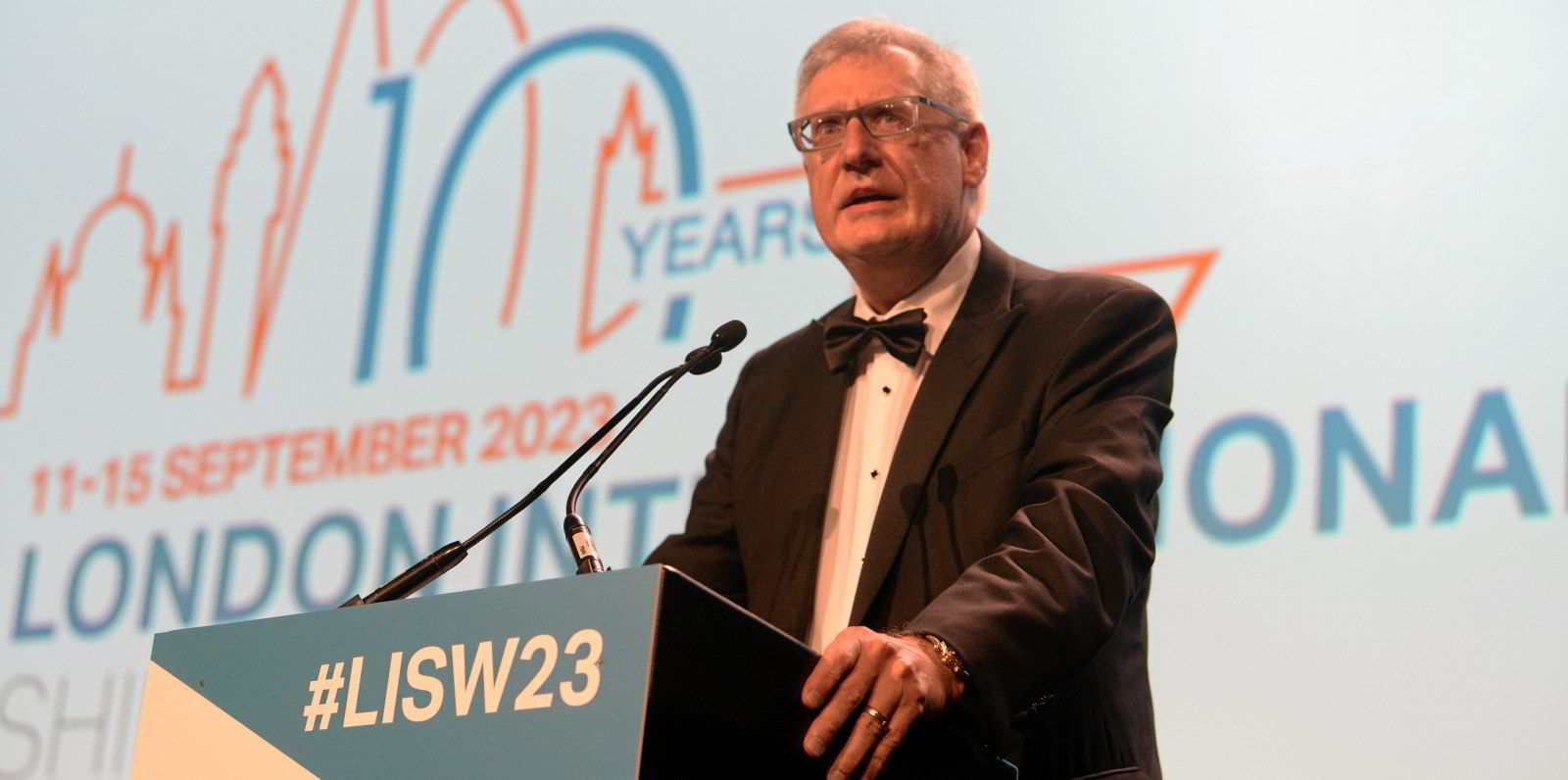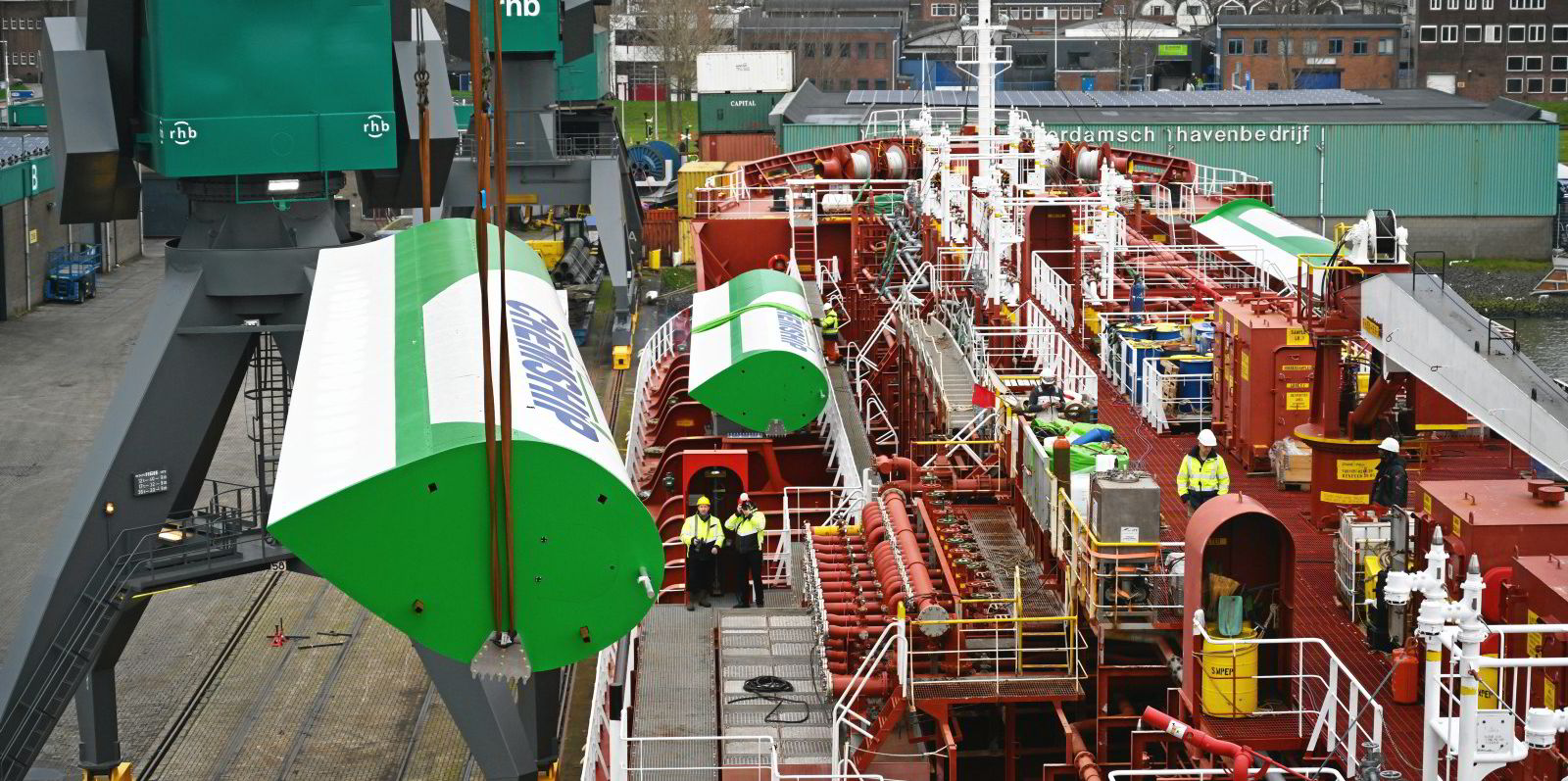The deadline is fast approaching for shipping to comply with the European Union’s next measures to cut carbon emissions.
The industry entered the EU’s Emissions Trading System at the beginning of this year and FuelEU Maritime is next on the horizon.
Shipowners are expected to submit emissions monitoring plans by the end of August to comply with the law.
Starting in 2025, FuelEU will put gradually tightening limits on the greenhouse gas intensity of the energy used by shipping.
Ricardo Batista, a European Commission policy officer, said the law seeks to promote the uptake of renewable and low-carbon fuels without obligating specific technologies.
“It is technology-neutral in its formulation, allowing operators to have a variety of different technology options and different compliance measures,” he told a webinar organised with the Maersk Mc-Kinney Moller Center for Zero Carbon Shipping.
Part of a wider package of EU carbon regulations and laws, FuelEU will start gradually with a 2% reduction in carbon intensity next year to reach an 80% reduction in 2050.
But amid building decarbonisation rules from the International Maritime Organization, experts said preparations need to be underway now, particularly given shipowners’ needs to submit a plan for how they will track the type and amount of fuel used in port and at sea.
A major difference between this law and rules previously imposed by the EU or IMO is that it focuses on more than the emissions by the ship itself.
FuelEU looks at the entire supply chain to assess the greenhouse gas intensity of an energy source.
The FuelEU Maritime law has the following carbon intensity limits for the energy used by shipping:
- 2% by 2025
- 6% by 2030
- 14.5% by 2035
- 31% by 2040
- 62% by 2045
- 80% by 2050
“One of the disruptive elements of FuelEU is its methodology, the lifecycle assessment on a well-to-wake basis, which is introduced for the first time as a greenhouse gas reduction measure in the regulatory framework for shipping,” Batista said.
“And this takes into account the contributions to greenhouse gas emissions from production and distribution of the fuels and also from the use of the fuels on board ships.”
Shipping companies do not have to make emissions reductions; they can just pay the penalty, an effective carbon tax on top of the EU’s new emissions trading requirement.
Although it starts with just a 2% cut in greenhouse gas intensity next year, FuelEU will still have a significant impact.
Benjamin Lechaptois, manager of the future shipping team at classification society and certification company Bureau Veritas, said a conventional vessel burning very low-sulphur fuel oil, the standard fuel for vessels without an exhaust gas scrubber, will need modifications to comply with the rule.

“So it means that even though it starts rather low, all those vessels … will have to find some tricks to comply with FuelEU Maritime or to pay the penalty,” he said, noting that one option is to accept paying penalties.
“So it’s all about your hedging strategy, whether you are keen to pay the penalty, or the ETS and FuelEU Maritime CO2 costs are embedded into a premium you are keen to pay or your clients are keen to pay.”
But Lechaptois also highlighted the opportunities within the FuelEU rules, including a pooling feature, in which shipping companies can put their vessels together and, if the average greenhouse gas intensity reduction complies with the law, then the individual ships in the pool also comply.
The law also allows for the blending of biofuels or e-fuels made from renewable energy with fossil-based fuels.
“Even though there will be some complexities, there are also some very nice mechanisms embedded into FuelEU Maritime,” Lechaptois said.
One of the complexities is the legislation’s new metric, which Lechaptois described as a “disruptive” element.
It is focused on CO2-equivalent emissions per megajoule of energy, which is not used in other greenhouse gas regulations.

“So the monitoring, the traceability and how will you … embed that into your operational practices is not that easy,” he said. “All the shipping companies have to submit their monitoring plans by August 2024, so it’s in less than six months’ time.”
That means now is the time to embed FuelEU into companies’ emissions monitoring.
How will FuelEU impact shipping and its greenhouse gas footprint?
Lechaptois highlighted one requirement that will push shipowners to adopt green tech: that container ships and passenger vessels use zero-emission technologies in port starting in 2030.
And although many would have liked to have seen more credit for wind propulsion, the legislation should help the adoption of that technology as well, he said.
In the calculation of emissions reductions, there is a “multiplier” for so-called renewable fuels of non-biological origin, or RFNBOs, as the EU refers to e-fuels produced from green electricity.
“So those fuels will be promoted because of these multipliers, but there may be some scarcity related to RFNBOs. So basically, in the short to medium term, you can imagine that a lot of biofuel blending below B30 will be bunkered in [ships] sailing from, to or intra EU waters,” he said, referring to a biofuel blend made up of 30% renewable sources like used vegetable oil or animal fats.
Inesa Ulichina, sustainable shipping policy officer at Transport & Environment, said it is also important that FuelEU does not just look at CO2. By factoring all greenhouse gas emissions from the start, it gets right to “the heart of the problem” of climate pollution, she said.

“The initial impact is probably not going to be that big, and this is one of the things that we have to address,” she said.
“It starts with a very modest 2% reduction of greenhouse gas intensity in the first five years, and only after 2035, the targets become more stringent, where we can see that it’s really going to push a big change — a big switch to the use of RFNBOs.”
One problem she pointed out was that fossil fuel-based LNG is incentivised by the regulation and will remain an important fuel for decades to come, despite environmentalists’ concerns about methane emissions.
Ulichina said FuelEU does create opportunities — like the pooling mechanism and multipliers for e-fuels — for companies that are frontrunners in green shipping.
Ulichina said Transport & Environment, a Brussels-based NGO and think tank, would have liked to have seen more incentives because she said many green fuels projects cannot go ahead because of unclear demand.
But FuelEU is up for review in 2027, and Ulichina said the environmental group is gathering its thoughts on how the law should evolve.

Transport & Environment will campaign for strengthening the greenhouse gas intensity targets, and it would like to see it apply to smaller vessels than 5,000 gt. The law only considers half of emissions for a voyage between the EU and countries outside the bloc. Ulichina said that the geographical scope could be broadened.
“There is a small wind factor included right now in the calculation, which kind of softens the greenhouse gas targets and makes them a little bit easier to attain when the ship has wind assist technologies,” Ulichina added.
“But this could be strengthened and improved to make shipping companies more interested in investing in those technologies.”
Read more
- Saverys’ CMB.Tech stacks giant bulker orderbook with ammonia-fuelled newbuilds
- FuelEU Maritime: The simple formula turbocharging investment in shipping
- Podcast: Chemship installs Econowind sails and Norsepower grows as wind becomes ‘the technology of 2024’
- Asian shipowners could face €1bn in EU emissions liabilities, says OceanScore
- Vietnamese shipowner says its tanker could not have been source of oil slick off Brazil





